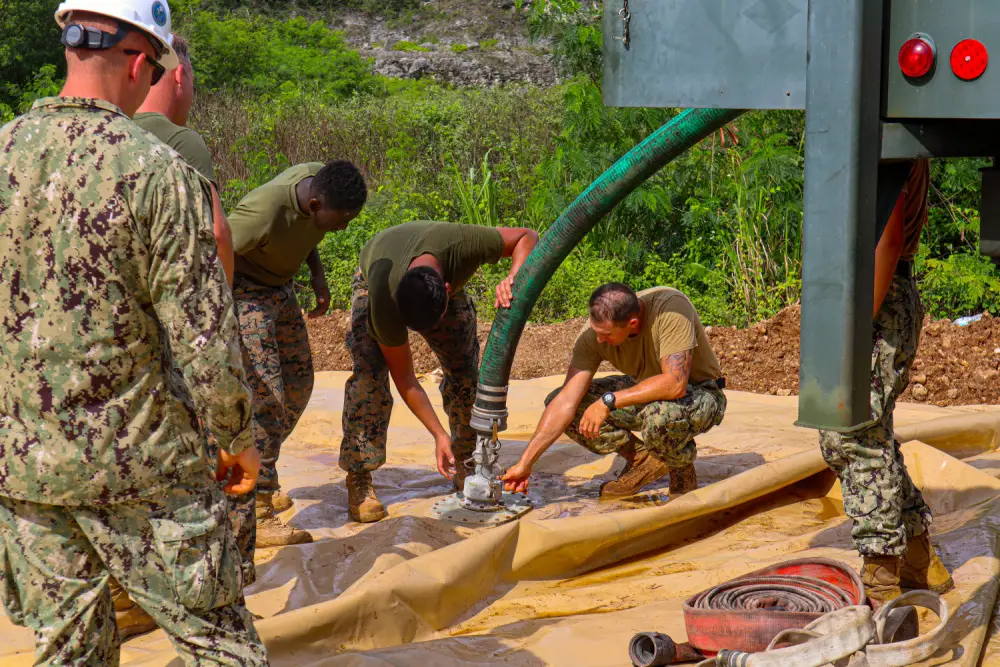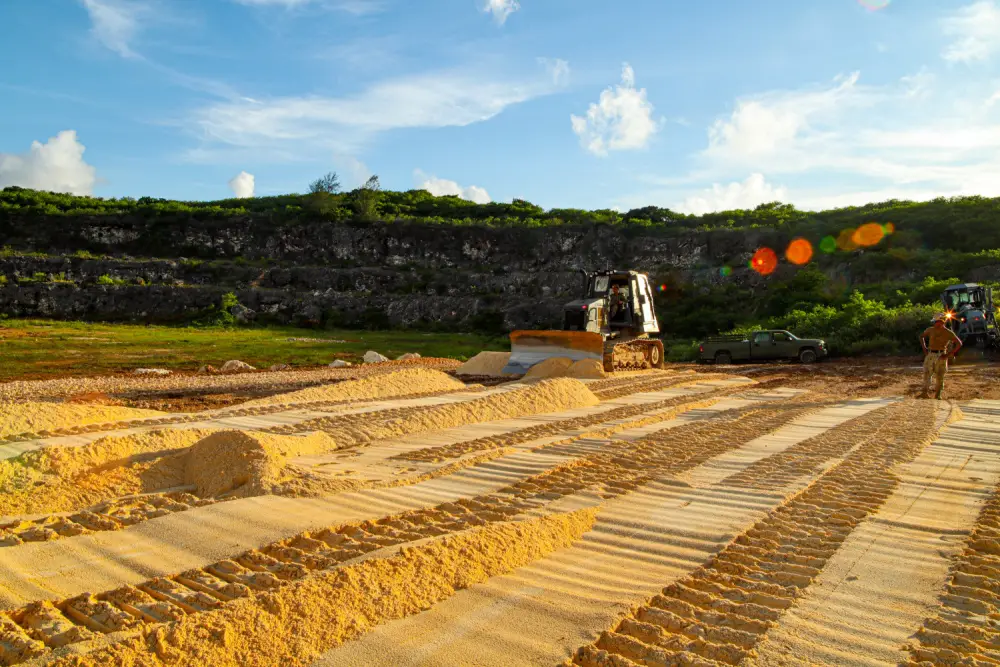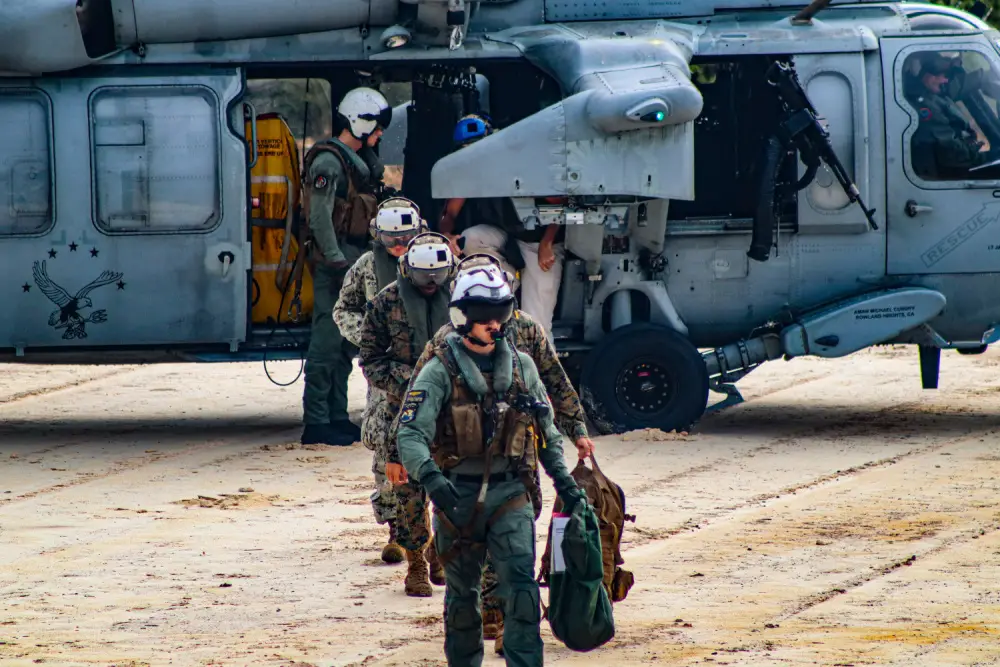Seabees assigned to Naval Mobile Construction Battalion (NMCB) 11 Det. Guam finished construction of a prototype helicopter landing zone (HLZ) on Orote Point Quarry on Naval Base Guam Tuesday, August 3rd. That same day the operational capability was tested when the “Island Knights” of Helicopter Sea Combat Squadron (HSC) 25 landed a MH-60S on the newly constructed landing zone. NMCB 11 Det. Guam used a state-of-the-art biocement application system developed by bioMASON with support from Defense Advanced Research Projects Agency (DARPA) to support III Marine Expeditionary Force (MEF) in the execution of this proof of concept helicopter landing pad. The construction of the HLZ provided valuable data to DARPA and bioMASON to further refine the science and biology needed to advance the concept of biocement.

“The advancement in construction technology this biocement application provides completely changes the scope of the battlefield. When you consider the ability of a small, task-tailored element to push out to an island with limited construction materials available, but a bacteria they can introduce to the native soils that can be used to create product with the strength of concrete that can be molded into any shape of their choosing—this goes beyond expeditionary landing zones. We can create the equivalent of hardened concrete structures, without any concrete in a much shorter period of time,” said Lt. Cmdr. Jeremiah Smith, Officer-In-Charge of Naval Mobile Construction Battalion (NMCB) 11 Det. Guam.

Ultimately, this project enhances expeditionary advanced base operations (EABO) through the expedient construction of helicopter landing pads through the application of bacteria to native, non-engineered surfaces. As the applied bacteria sample matures and multiplies, it strengthens the soil, promotes erosion control, and increases dust abatement to improve the visibility and landing ability of aircrew. The ultimate goal of the technology is to replace the need and demand for Portland cement and literally lighten the load of construction materials that need to be transported forward to austere locations. HLZ construction is only a starting point; with further research and development, biocement technology could be used for other infrastructure requirements.

EABO will prove vital in the next major global conflict as U.S. and partner forces seek to expeditiously establish bases for short-term operations within the weapon engagement zone as they bring their operations closer to the primary adversary. This project demonstrates the Naval Construction Force’s (NCF) relevance in that fight with their ability to rapidly construct HLZs as well as other Aerial and Sea Ports of Embarkation and Debarkation to support transportation of personnel and equipment, including MEDEVAC. The subgrade laid by the NMCB 11 Det. Guam crew to construct the HLZ used aggregate blasted and crushed by the same crew in quarry operations the previous month, demonstrating the capability of the NCF to independently produce and use aggregate, further reducing the need for procuring and transporting material across vast distances.
